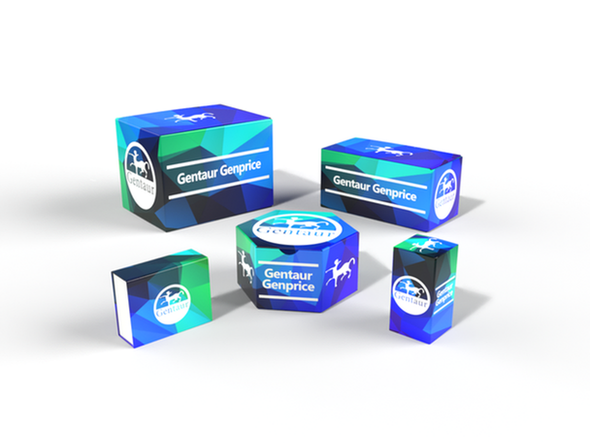Description
KAT5 Antibody | 7339 | Gentaur UK, US & Europe Distribution
Host: Rabbit
Reactivity: Human, Mouse, Rat
Homology: N/A
Immunogen: KAT5 antibody was raised against a 15 amino acid peptide near the carboxy terminus of human KAT5.
The immunogen is located within the last 50 amino acids of KAT5.
Research Area: Autophagy
Tested Application: E, WB, IHC-P, IF
Application: KAT5 antibody can be used for detection of KAT5 by Western blot at 1 - 2 μg/mL.
Antibody validated: Western Blot in human samples; Immunohistochemistry in rat samples and Immunofluorescence in rat samples. All other applications and species not yet tested.
Specificiy: Multiple isoforms of KAT5 are known to exist.
Positive Control 1: Cat. No. 1303 - Human Brain Tissue Lysate
Positive Control 2: N/A
Positive Control 3: N/A
Positive Control 4: N/A
Positive Control 5: N/A
Positive Control 6: N/A
Molecular Weight: Predicted: 51, 54, 56, 60 kDa
Observed: 53 kDa
Validation: N/A
Isoform: N/A
Purification: KAT5 Antibody is affinity chromatography purified via peptide column.
Clonality: Polyclonal
Clone: N/A
Isotype: IgG
Conjugate: Unconjugated
Physical State: Liquid
Buffer: KAT5 Antibody is supplied in PBS containing 0.02% sodium azide.
Concentration: 1 mg/mL
Storage Condition: KAT5 antibody can be stored at 4˚C for three months and -20˚C, stable for up to one year.
Alternate Name: KAT5 Antibody: TIP, ESA1, PLIP, TIP60, cPLA2, HTATIP, ZC2HC5, HTATIP1, Histone acetyltransferase KAT5, 60 kDa Tat-interactive protein, Tip60
User Note: Optimal dilutions for each application to be determined by the researcher.
BACKGROUND: KAT5 Antibody: KAT5 belongs to the MYST family of histone acetyl transferases (HATs) and was originally isolated as an HIV-1 TAT-interactive protein. HATs play important roles in regulating chromatin remodeling, transcription and other nuclear processes by acetylating histone and non-histone proteins. KAT5 has been shown to play a role in DNA repair and apoptosis and is thought to play an important role in signal transduction and autophagy.










